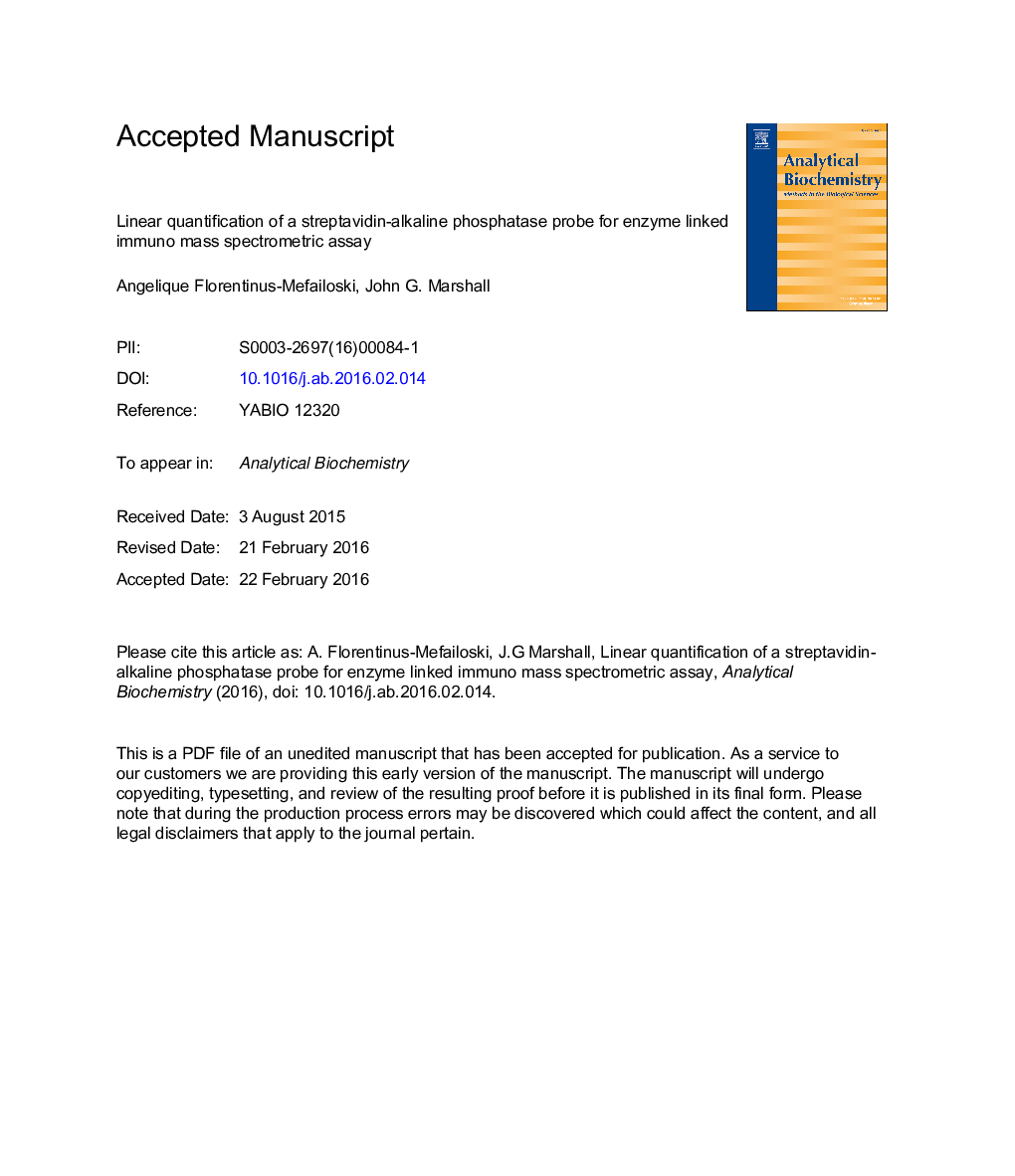| Article ID | Journal | Published Year | Pages | File Type |
|---|---|---|---|---|
| 7557574 | Analytical Biochemistry | 2016 | 20 Pages |
Abstract
The alkaline phosphatase-streptavidin (AP-SA) probe released adenosine (â¼267.2 Da) from the substrate adenosine monophosphate (AMP), where a signal may be detected from as little as 0.5 μl of a 0.1-pg/ml dilution of the probe (2.6 Ã 10â22 mol). The signal from the AP-SA probe was linear from 1 to 50 pg/ml by monitoring adenosine release at 268 m/z (M + H) with liquid chromatography, electrospray ionization, and quadrupole mass spectrometry (LC-ESI-MS). The safe limit of detection and quantification of the AP-SA probe was approximately 0.5 pg/well or 5 pg/ml. Enzyme-linked immuno mass spectrometric assay (ELIMSA) using the AP-SA probe provided a linear signal response for prostate-specific antigen (PSA) against external standards from 1 to 500 pg/ml. The ELIMSA showed a safe limit of detection and quantification at 5 pg PSA/well or 50 pg/ml (false positive detection rate P â¤Â 0.01). Female samples of 100 μl plasma/well were read against standards and blanks made in normal female plasma, and the lowest sample quantified was approximately 9.8 pg/well or 98 pg/ml. Here ELIMSA was applied to measure PSA in plasma from female, normal male, prostatectomy patient, and cancer patient samples that showed significant differences by analysis of variance (ANOVA).
Keywords
HSDPSAPBSESITIRFAMPBSALC–MSMS/MSUV–Visadenosine monophosphatebovine serum albuminAlkaline phosphataseStreptavidinUltraviolet–visibleanalysis of varianceANOVAEnzyme-linked immunosorbent assayELISAhonestly significant differenceSIMTandem mass spectrometrySingle ion monitoringPhosphate-buffered salineAntibodyprostate-specific antigenliquid chromatographytotal internal reflection fluorescenceelectrospray ionization
Related Topics
Physical Sciences and Engineering
Chemistry
Analytical Chemistry
Authors
Angelique Florentinus-Mefailoski, John G. Marshall,
